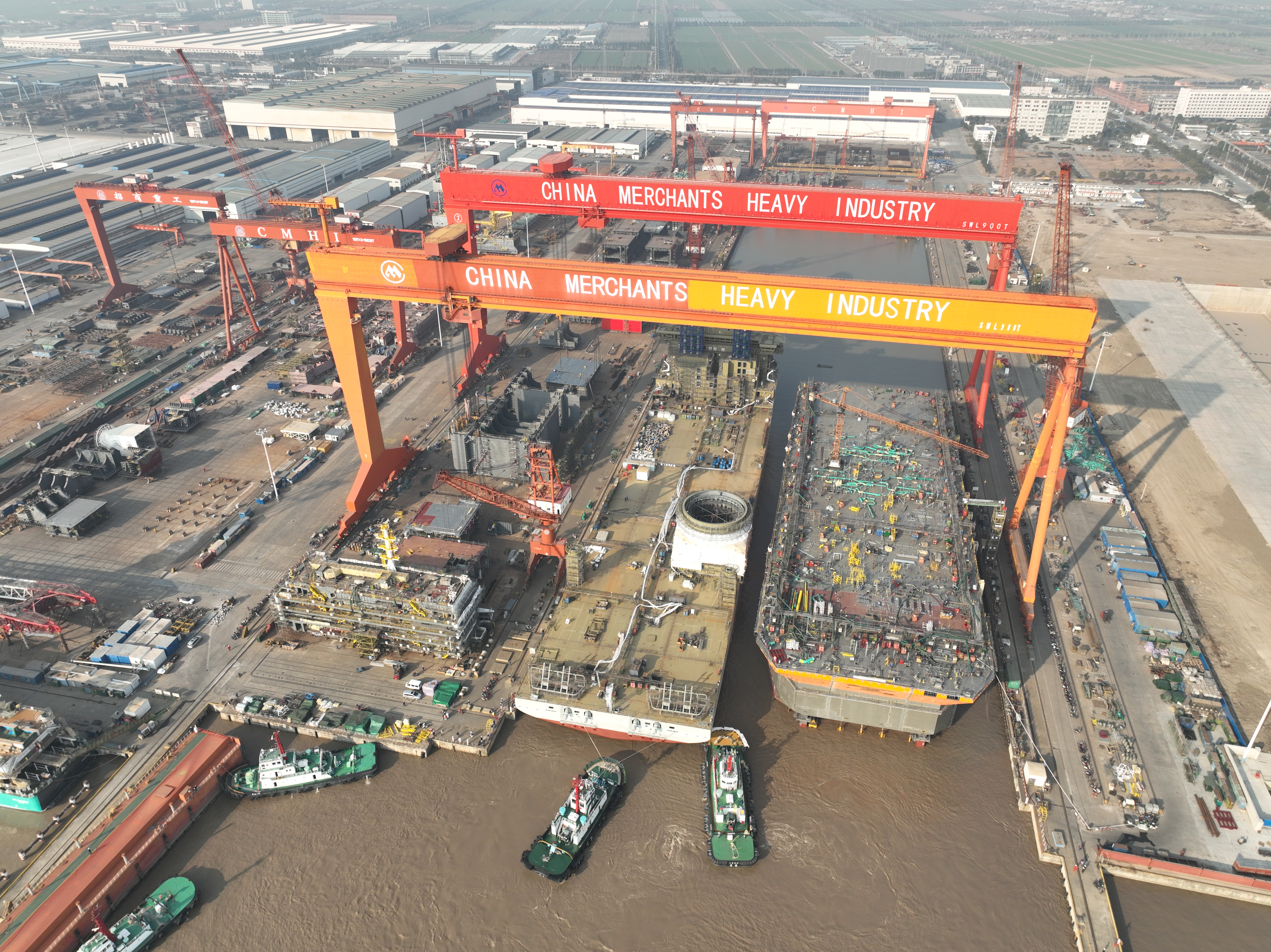An important milestone is reached in the construction of Les Alizés, a Next-Gen floating offshore installation vessel for offshore renewables and decommissioning. Jan De Nul launched its Offshore Installation Vessel Les Alizés at the CMHI Haimen shipyard in China. This vessel will be the largest Heavy Lift Vessel in Jan De Nul’s fleet, able to install XXL offshore wind components, in floating conditions and with ultra-low emissions.

The launch started on 2nd January by flooding the dry dock in which Les Alizés was built. Once afloat, Les Alizés was moored alongside the adjacent quay wall. Yesterday, the official launching ceremony took place at the CMHI Haimen shipyard, in the presence of the shipyard management and Jan De Nul Group representatives.
The final phase of the vessel’s construction can now begin, including sea trials. Les Alizés is due for delivery in H2 2022 in good time for her first assignment in Germany for the construction of Gode Wind 3 and Borkum Riffgrund 3 Offshore Wind Farms, transporting and installing 107 monopile foundations for the offshore wind major Ørsted.

Philippe Hutse, Director Offshore Division at Jan De Nul Group: “The construction of our offshore floating installation vessel Les Alizés is well on track. We can look forward to delivery later this year, so that we can continue to build the future of offshore renewable energy. Together with our Offshore Jack-Up Installation Vessel Voltaire, which is also under construction in China, we will have the perfect set of offshore installation vessels that will be able to install current and future generations of offshore wind farms. This is how we offer our customers the most efficient installation solutions and results."

An innovative design ready for future challenges
Following her order at the end of 2019, the design of Les Alizés has been further fine-tuned. The vessel is taking shape thanks to the investments in innovative mission equipment, enabling Jan De Nul to offer solutions for the next generation offshore wind installation challenges while improving safety and efficiency:

- A highly innovative crane with Universal Quick Connector (UQC): this crane will be among the largest in its class. The crane will utilize a Universal Quick Connector (UQC), developed by Huisman, and leveraging the expertise of Jan De Nul’s operational and engineering teams. The result is a ground-breaking innovative UQC, that will deliver a major step change in safer offshore lifting activities.
- An innovative motion-compensated pile gripper: the highly advanced electrical gripper, with an integrated guidance and survey system, will allow safe and efficient installation of next-generation monopiles with pin-point accuracy.
- A fully automated monopile handling system: the tailor-made system consists of a set of cradles, a skidding system and an upending hinge to handle and install XXL monopiles. It is ideally suited to work in challenging weather conditions and high sea states.

Jan Van De Velde, Head of Newbuilding Department at Jan De Nul Group: “It is our continued philosophy to focus on operational efficiency and improving safety as the main objectives. The Universal Quick Connector, the innovative Motion-Compensated Pile Gripper and the fully automated Monopile Installation System perfectly fit into our strategy of having no manual deck intervention during installation. We stay one step ahead in offering the renewables industry a safe and efficient one-stop-shop installation solution.”

Les Alizés will be an Ultra-Low Emission vessel with hybrid capability
In order to reduce the vessel’s CO2 emissions, the power plant on board is a hybrid setup. The arrangement combines diesel-driven generators with battery and drive technology to optimize engine loading and to recover the potential energy returned from the heavy lift crane. To further reduce the carbon footprint of installation activities, the ultra-low emission vessel can run on second-generation biodiesel that reduces the fuel carbon footprint by up to 90%.

As an ultra-low emission vessel, Les Alizés is equipped with a highly advanced dual exhaust filter system, removing up to 99% of nanoparticles from emissions using a diesel particulate filter (DPF) and reducing the NOx emissions and other pollutants by means of a selective catalytic reduction system (SCR) to levels in accordance with EU Stage V regulation. Les Alizés and Voltaire will be the first two seaworthy installation vessels in the world with extremely low emissions.